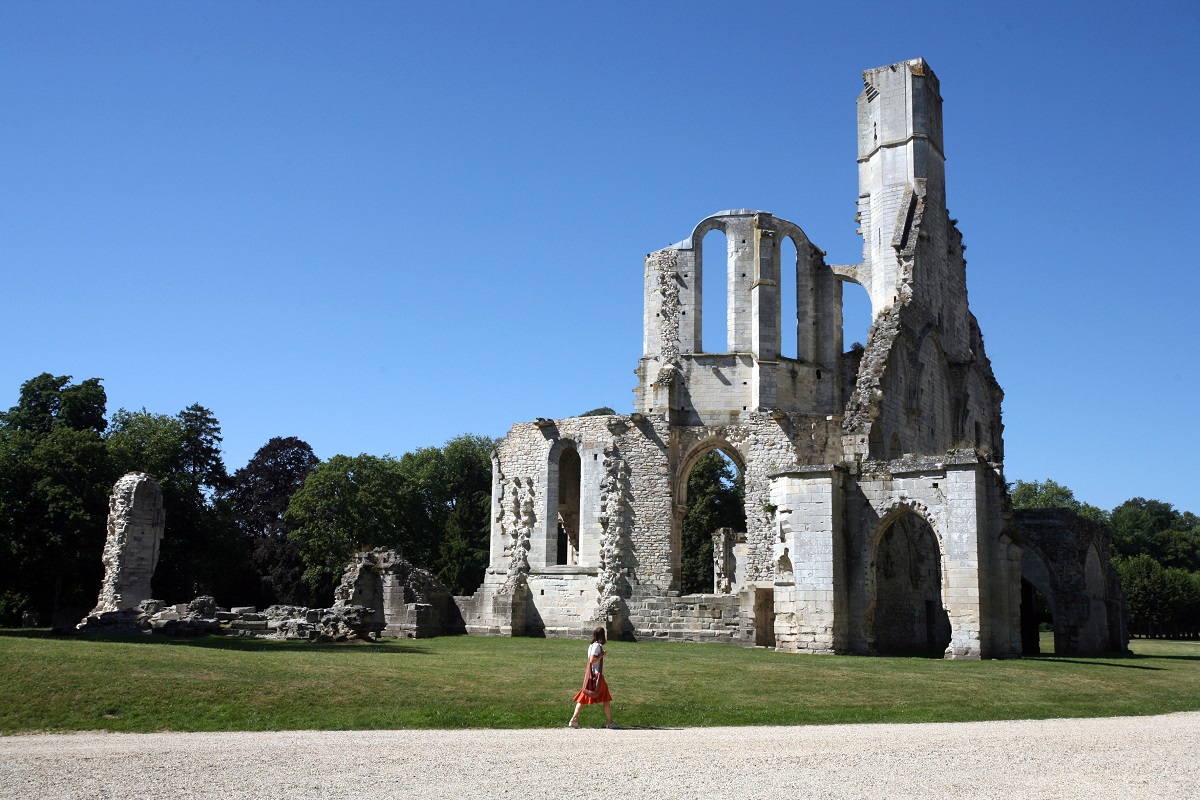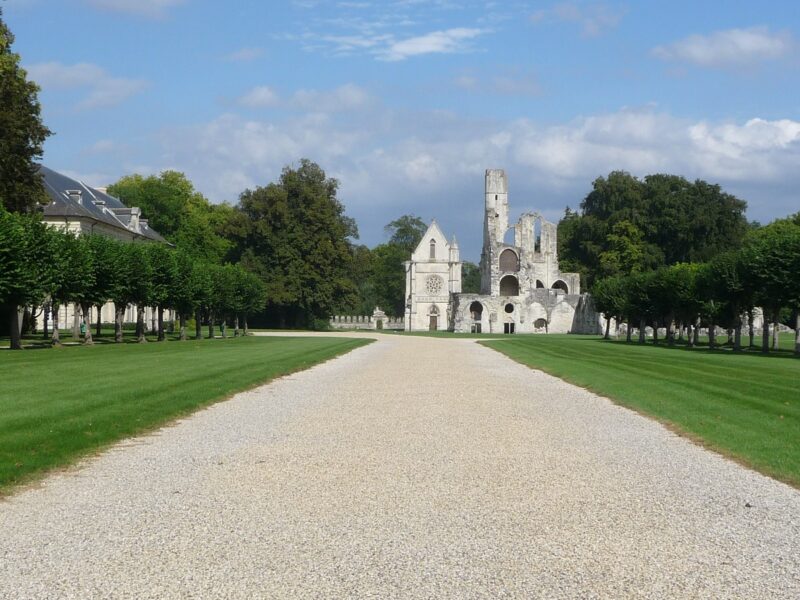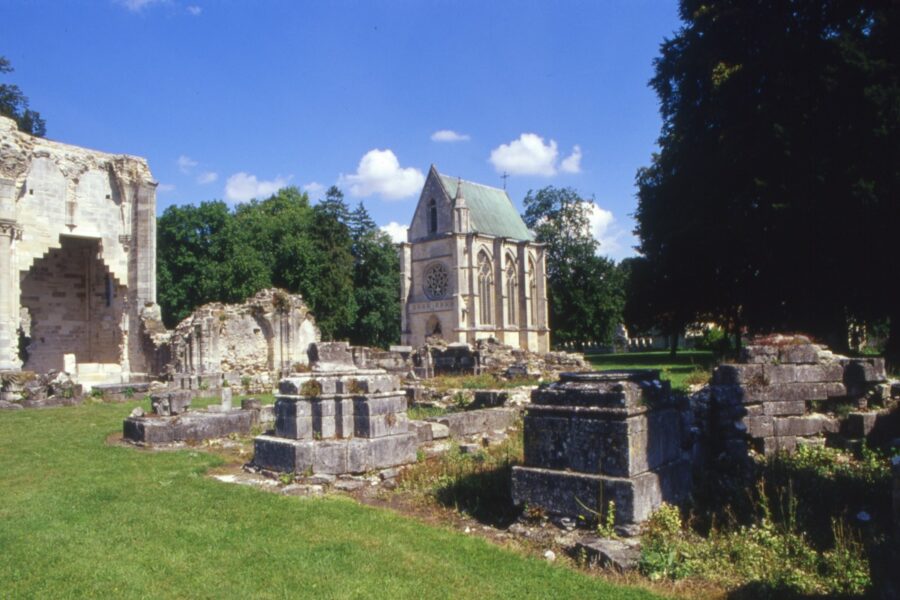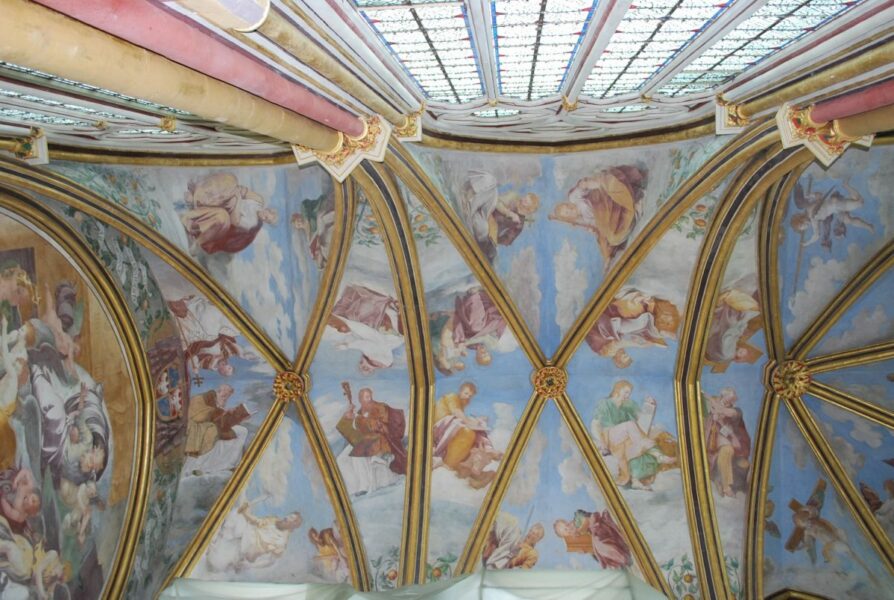Add to favorites
Take a trip through eight centuries of history and discover, 45 kilometres from Paris, a splendid abbey that became an exceptional home for collectors.
Whether you’re a romantic, love gardens or simply enjoy history and stories, the ancient Cistercian abbaye de Chaalis has something to offer you.
In the heart of the Ermenonville forest, set in a 1000-hectare estate that includes some 600 hectares of forest, the remains of a Gothic church, the abbot’s chapel decorated with Renaissance frescoes, the abbey palace and its splendid museum, the park and its ornamental lakes and rose garden make an enchanting setting for a memorable excursion.
Under the protection of abbots
To establish their power, the kings of France allied themselves with the church and built abbeys, which they endowed richly with goods and land.
Located near Senlis, a royal city, the Abbaye de Chaalis was founded in 1137 by Louis VI, known as ‘the Fat’, to commemorate his cousin Charles the Good, Count of Flanders, who was assassinated in 1127. The abbey was placed under the auspices of the Cistercians.
Following a first church, a new Gothic-style building was constructed in 1202, under the direction of Abbot Adam. At 82 metres long and 40 metres wide, it was, until its destruction, one of the largest Cistercian churches in the kingdom.
The abbey developed and profited from its wealth of possessions. It established large tithe barns, like the one at Fourcheret, which was used to collect the tithe, a tax on the crops produced by farmers on lands belonging to the abbey.
In 1245, Saint Louis, regularly resided at Chaalis, where he founded the Chapelle Sainte-Marie, inspired by the Sainte Chapelle in Paris.
But it was during the 15th century that the abbey experienced its heyday. As is testified to in a very enthusiastic letter written by Jean de Montreuil, the king’s notary and secretary: ‘The Abbaye de Chaalis is a kind of Heaven on Earth inhabited by saints. It is surrounded by fountains, streams and small torrents, whose water, which is very clear, flows with a soft murmur … Here one sees ten large ornamental lakes with a very good yield, filled with an infinite number of fish….’
The abbey had orchards, beehives, fish ponds and numerous mills – for wheat, beating laundry, tanning, making oil and even splitting timber.
The library was extraordinarily well stocked. The abbey, a centre of intellectual activity, was regularly inhabited and visited by the great writers, philosophers and poets of the time.
In 1541, François I appointed Ippolito II d’Este as Abbot of Chaalis. Eager to invite the king to the abbey, Ippolito, a cardinal from Ferrara, had the site partially redeveloped. Notably, he built a small garden, surrounded by a crenellated wall with a monumental portal, attributed to the Italian architect Serlio. He commissioned Francesco Primaticcio to decorate the Chapelle Sainte-Marie in the Italian Renaissance style.
Later, the in commendam system impoverished the abbey. The abbots personally collected the income generated by the land. The Count of Clermont, the king’s cousin, who was abbot in 1721, embarked on lavish building works that he was unable to complete due to a lack of funds. Only part of the abbey palace, designed by architect Jean Aubert, was finished.
In 1787, the abbey was declared bankrupt. After the Revolution, the abbey estate and its farms, which had become biens nationaux, were gradually sold off.
Under the protection of women
In the early 19th century, two successive owners maintained the premises as best they could, using, for example, stones from the ruins and the church for new buildings or to strengthen the existing one.
In July 1850, Rose de Vatry, a wealthy Parisian, bought the Chaalis estate. She strove to promote the site, aware of its beauty thanks to the nascent Romanticism, championed by Gerard de Nerval:
‘The view was revealed as you came out of the woods. We had arrived at the edge of the Châalis lakes. The galleries of the cloister, the chapel with its slender ribs, the feudal tower and the small château, which witnessed the love affair between Henri IV and Gabrielle, were tinged red as the sun set behind dark green forest …’
She demolished the less important buildings but restored the chapel, consolidated the ruins of the church and built an orangery and large stables like those at Chantilly. Hunting remained one of the most popular activities with visitors.
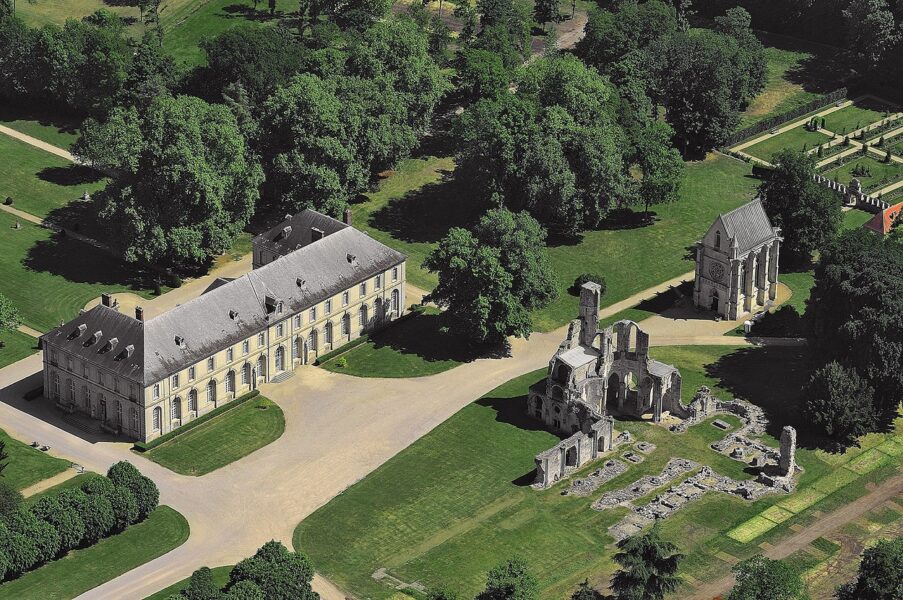
After Mme de Vatry’s death, the abbey passed by succession to the family of Prince Murat, descendant of the brother-in-law of Napoleon 1st, who put it up for sale in 1902.
Nélie Jacquemart-André, a very rich widow and art collector, was at that time on a voyage to India and Burma. When she learned that Chaalis was for sale, she had a consuming desire to buy it: ‘I hope I shall have Chaalis, it is my greatest longing’. As a protégé of Mme de Vatry, she had spent memorable summers there as a child. She needed ‘a place of rest and occupation; that would be good and healthy, for I am but a wanderer’.

At great expense, the new owner modernised the abbey palace by installing electricity, using a generating station built in the old mill, central heating and a telephone, which was still very rare at that time. She completely transformed the ground floor, the dining room and the library. She moved in her many works of art and converted the monks’ cells upstairs into chambers for herself and her guests.
Nélie Jacquemart-André is buried in the abbey chapel. In her will, she bequeathed her Parisian mansion on the Boulevard Haussmann and the abbey estate to the Institut de France, with the stipulations that they be turned into museums open to all, with no changes made to them, with the names ‘Musée Jacquemart-André’ and ‘Abbaye Royale de Chaalis – Musée Jacquemart-André’.
For more information: website
Practical information
Abbaye royale de Chaalis
60300 Fontaine-Chaalis
Tel: +33 (0)3 44 54 04 02
Site internet
To complete your visit:
To discover an idea for a walk, click on this link, or download the app ‘rando Parc Oise’ to be geolocated.
Add to favorites



